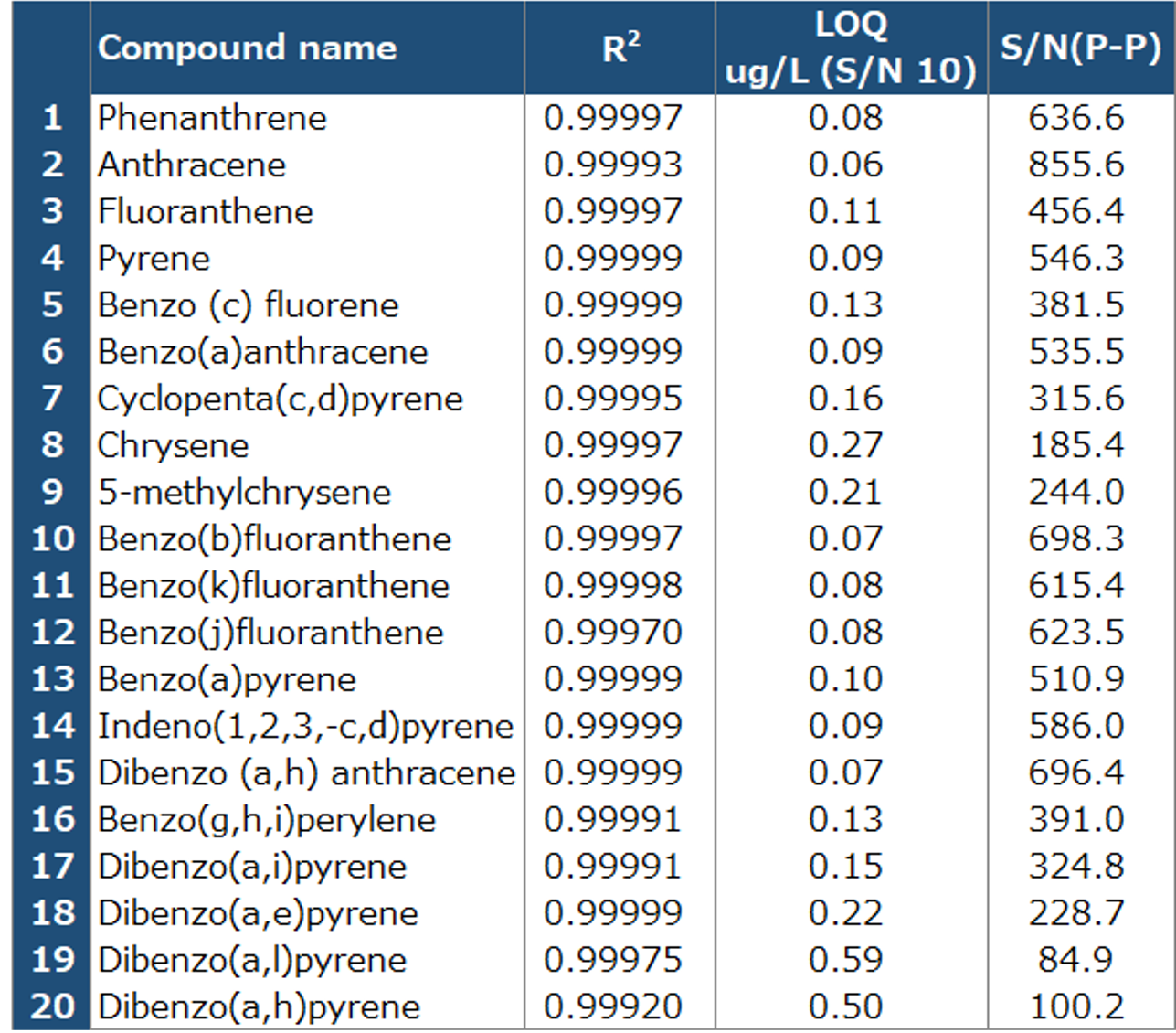High sensitivity detection method for polycyclic aromatic hydrocarbons using GC-MS/MS
MSTips No. 448
Introduction

JMS-TQ4000GC
Polycyclic aromatic hydrocarbons (PAHs) are organic compounds produced not only by industrial activities but also by the combustion of substances in human activities and natural phenomena such as home heating, cooking, and forest fires. It has been recognized that PAHs have strong carcinogenicity or mutagenicity. Because they are produced in various combustion processes, there is a possibility that PAHs are contained not only in environmental pollution but also in various substances around human activity. The government organizations of several territories have already controlled and regulated contaminant level of PAHs from various points of view.
In Japan, the PAHs level in environmental pollutants is controlled and regulated, and the contamination levels of PAHs in various household products are also controlled and regulated by law (Act on Control of Household Products Containing Harmful Substances).
In Europe, the contamination level of PAHs in familiar products such as toys and furniture is controlled and regulated by GS mark certification from the perspective of safety certification. The European Food Safety Authority (EFSA) sets maximum acceptable levels for PAHs in food. Various regulations concerning PAH contamination levels have been in place, and there is a possibility to create new regulations about PAHs from different interests.
In the United States, the U.S. Environmental Protection Agency (EPA) regulates PAHs pollution levels in soil and water, and the Food and Drug Administration (FDA) sets limits for PAH contamination levels in food. In addition, each state and local government may implement its own regulations, and it is expected that the scope of regulations will continue to expand in the future.
Several methods have been proposed to measure trace amounts of PAHs. Gas chromatography- triple quadrupole mass spectrometry (GC-Triple QMS) is commonly used for high sensitivity measurement methods for specific PAHs in complex matrices. Twenty kinds of PAHs shown in Table 1 (left) were measured using JMS-TQ4000GC (JEOL Ltd.) and those the results are reported in this application note.
Table 1. Target compounds, Internal Standard compounds and SRM conditions

Experimental
The GC and MS/MS measurement conditions are shown in Table 2. The JMS-TQ4000GC has two different SRM modes: (1) 'high-speed mode' in which monitoring channels can be switched with high speed and (2) 'high-sensitivity mode' in which high-sensitivity measurements can be achieved by expanding ion accumulation time with normal switching speed for SRM channels. The high-speed mode was applied for this measurement in anticipation of an increase in the number of target compounds in the future. A 'Select PAH' column (Agilent Technology) dedicated to PAH analysis was used and the oven heating rate program was finely implemented to achieve chromatographic separation of PAHs with similar structures. Also, as shown in Table 1 (Right side), several 13C-labeled PAHs were used as internal standards.
Table 2. Measurement Conditions

Results
Calibration curves in the range of 5–250 μg/L for 20 kinds of PAHs were created. The calibration curves for all 20 PAHs gave good linearity with more than 0.999 value as coefficient of determination (r2). The SRM chromatograms of the three benzofluoranthenes (b, k, j) and the two 13C-labeled benzofluoranthenes (b, k) that were used as internal standards were shown in Fig.1.
Since the three benzofluoranthenes (b, k, j) are structural isomers with the same elemental composition, the SRM conditions to monitor those three benzofluoranthene were exactly same. But chromatographic separation for those three benzofluoranthene (b, k, j) could be achieved by using the Select PAH column
The limit of quantification (LOQ) values for the 20 PAHs were calculated as the peak with S/N =10 based on S/N values (Peak-to-Peak) of each PAHs peaks at 5 μg/L that was measured as lowest calibration point and were summarized in Table 3 together with S/N values at the 5 μg/L calibration point. LOQ values less than 0.3 μg/L were obtained for 18 PAHs, excluding dibenzo(a,l)pyrene and dibenzo(a,h)pyrene, and the detection limit values less than 1 μg/L were obtained for those two PAHs. It could be concluded that the SRM measurement using the JMS-TQ4000GC (JEOL Ltd.) could achieve highly sensitive detection for the 20 PAHs.

Figure 1. SRM chromatograms of 3 benzofluoranthenes (b ,k, j) and 13C labelled benzo (b, k) fluoranthenes
Table 3. Linearity of calibration curve and detection limit for each target PAHs

Conclusion
We have used the JMS-TQ4000GC SRM high-speed mode in this study for considering the possibility that the number of target analytes may increase in the future, and it was possible to detect all PAHs with high sensitivity. The results show that the JMS-TQ4000GC can be fully utilized for quantitative analysis of PAHs.
Solutions by field
Related products
Are you a medical professional or personnel engaged in medical care?
No
Please be reminded that these pages are not intended to provide the general public with information about the products.

